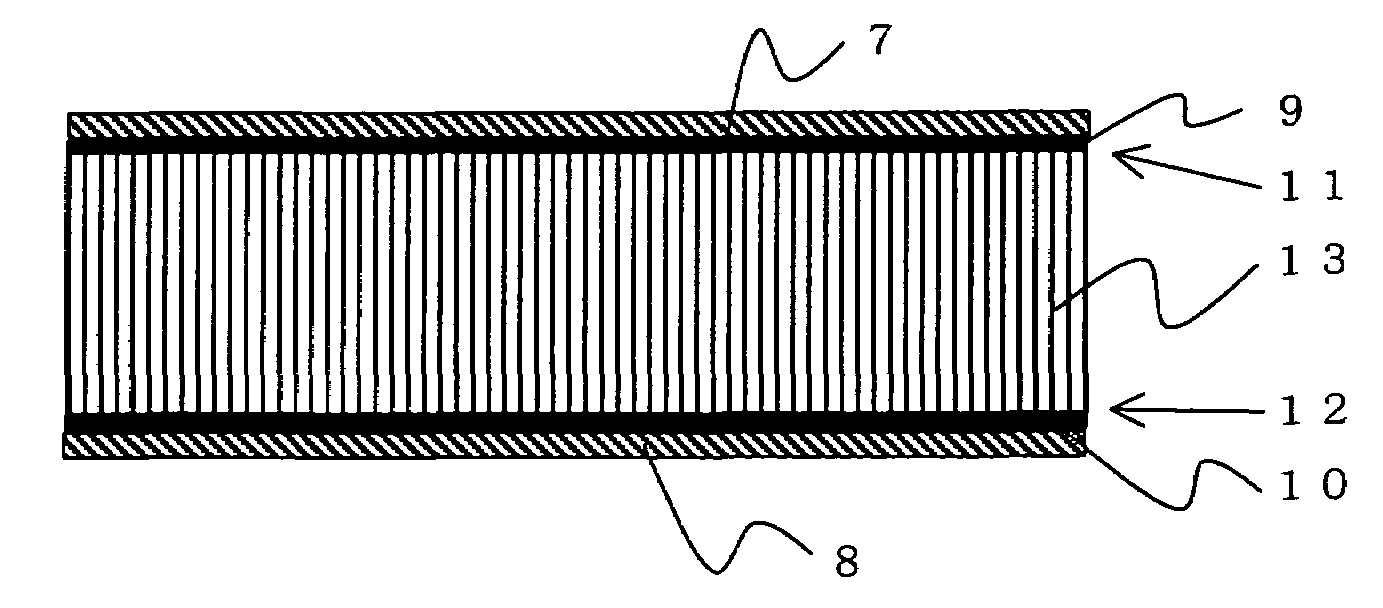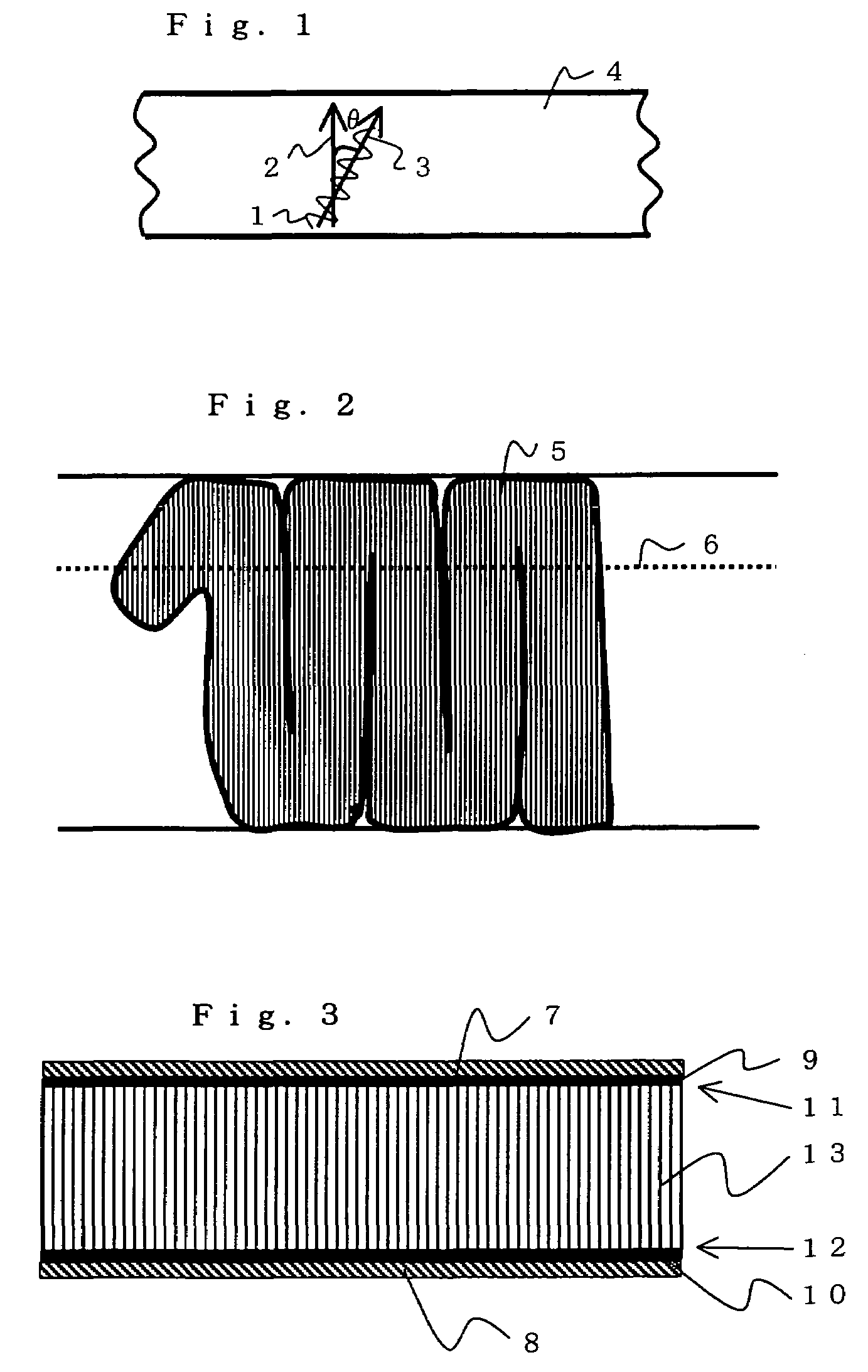Composite fiber structure and method for producing the same
a technology of composite fibers and fibers, applied in the field of composite fibers, can solve the problems of urethane-inherent urethane deterioration, durability to dry cleaning, and urethane-inherent urethane-related problems, and achieve the effects of reducing the number of urethane-infested fibers, and improving the durability of dry cleaning
- Summary
- Abstract
- Description
- Claims
- Application Information
AI Technical Summary
Benefits of technology
Problems solved by technology
Method used
Image
Examples
example 1
[0088]38% (by weight) of polybutyrene series terephthalate, which was obtained by polymerizing an acid component obtained by mixing terephthalic acid and isophthalic acid at 80 / 20 (% by mol) and butyrene glycol, was further reacted under heat with 62% (by weight) of polybutyrene terephthalate (molecular weight: 2,000) to obtain a thermoplastic block copolymer polyetherester elastomer. The thermoplastic elastomer had an intrinsic viscosity of 1.0, a melting point of 155° C., a breaking elongation as a film of 1,500%, a 300% elongation stress of 2.94 Pa (0.3 kg / mm2), and a 300% elongation recovery rate of 75%. An elastic conjugate fiber thread was spun in an ordinary manner from the thermoplastic elastomer as a shell and ordinary polybutyrene terephthalate as a core with a weight ratio of core / shell of 50 / 50. The elastic conjugate fiber thread was eccentric core / shell conjugate fibers. The elastic conjugate fiber thread was stretched in twice and applied with a surface treating agent ...
example 5
[0094]50% (by weight) of the same elastic conjugate fibers B as used in Example 1 and 50% (by weight) of the conjugate short fibers A were mixed and spun and passed through a roller card, Crossley and a roller card in this order, and then the web was folded into a pleated form as shown in FIG. 2 by using Struto Equipment, produced by Struto International, Inc. to orient most of fibers in the thickness direction, followed by subjecting to a heat adhesion treatment among fibers in a heat-treating furnace at 200° C., to obtain a polyester elastic fiber structure (T / W: 3.9, basis weight: 750 g / m2, thickness: 30 mm, density: 0.025 g / cm3) The outer surface side and the back surface side of the structure were sliced to a thickness of 3 mm, and the structure was sliced at the center to produce a sheet material having a thickness of 12 mm. It was accumulated on a polyester thick fabric sheet having been subjected to a preliminary crimping process as an outer fabric and a polyester tricot fab...
PUM
| Property | Measurement | Unit |
|---|---|---|
| melting point | aaaaa | aaaaa |
| density | aaaaa | aaaaa |
| melting point | aaaaa | aaaaa |
Abstract
Description
Claims
Application Information
 Login to View More
Login to View More - R&D
- Intellectual Property
- Life Sciences
- Materials
- Tech Scout
- Unparalleled Data Quality
- Higher Quality Content
- 60% Fewer Hallucinations
Browse by: Latest US Patents, China's latest patents, Technical Efficacy Thesaurus, Application Domain, Technology Topic, Popular Technical Reports.
© 2025 PatSnap. All rights reserved.Legal|Privacy policy|Modern Slavery Act Transparency Statement|Sitemap|About US| Contact US: help@patsnap.com


